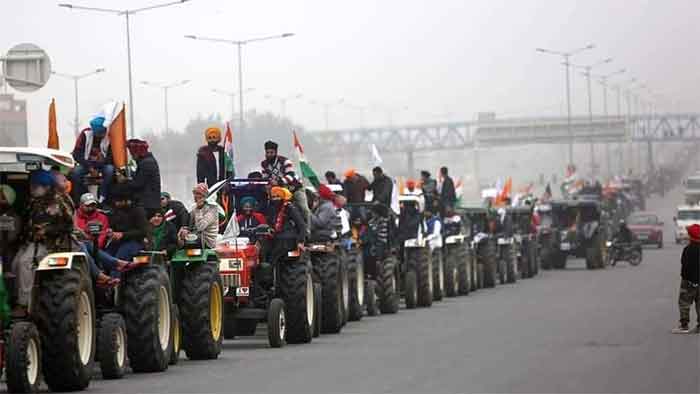
The issue of minimum support price or MSP for various crops grown by farmers has seldom attracted the kind of intense debate as has taken place in recent times, due to the ongoing farmers’ movement. There is wide agreement that government should provide MSP based purchase for various crops, as this helps to ensure and stabilize a fair price for farmers. However once we go into details like the extent to which the government should make available resources for this, how MSP should be calculated, how it should be administered, whether and what kind of legality should be given to this, then there are differences of opinion.
The other related responsibility the government has is to ensure food availability at affordable prices, which in real life means making available highly subsidized food to a large number of households in present conditions. The constraint the government has to keep in mind relates to the extent of subsidy it can afford to provide to food and farming sector.
One way in which demand of farmers for a legal guarantee for MSP can be realized is by making available so much resources that all the crops for which MSP has been announced ( 23 leading crops, excluding vegetable, fruits, spices etc.) can be purchased by the government at this MSP. In other words we have to multiply estimates of production of crops by MSP of each crop . This comes to around Rs. 1.1 million crore, or 11 lakh crore. However from this we have to deduct the amount which farmers will retain for self-consumption and sharing with relatives etc. This will reduce the financial burden from Rs. 11 lakh crore to about Rs. 8 lakh crore. But the government is already spending around Rs. 2.7 lakh crore on MSP purchase so the actual increase may be around 5.3 lakh crore. If the existing system of sugarcane purchase mostly at private and coop levels remains then the financial implication decreases to around Rs. 4.3 lakh crore, but then all the complaints relating to sugarcane purchase by factories will also remain so it is better to include sugarcane and let the financial implication remain at Rs. 5.3 lakh crore only.
Now the next question is how much the government can earn by selling this huge amount of crops ( mostly food crops but also non-food crops like cotton and jute). This is more difficult to estimate, as this depends on year to year fluctuations of domestic and export price. As the main demand of the government has to be to end hunger and malnutrition so it can not operate in terms of maximizing gains. Still if it is estimated that out of the Rs. 8 lakh it spends, it can earn about half from sales, then the total burden is Rs. 4 lakh crore and compared to the burden that already exists of Rs. 2.7 lakh crore, the additional burden that exists is of Rs. 1.3 lakh crore which should be manageable. However this will increase with every increase in MSP. What is more, the main procurement agency already has huge debts and the government may be in no mood at all to increase this financial burden.
Moreover to the economic costs calculated above should be added the costs relating to infrastructure, storage, salaries, transport etc. ( and at the level of practical reality, inefficiency and corruption of most government systems) and hence economic costs can go up quite a lot. Then there is the additional question of why MSP will remain restricted to 23 crops and why demands for MSP for onion, potato, other major vegetables and fruits and spices etc. will not be made, particularly when these are important for nutrition programs.
Then there are some more questions. If a high MSP is assured for a certain crop using a lot of chemical fertilizers and pesticides and excessive water, also growing the crop as a monoculture instead of soil protecting mixed farming systems, then where will be the incentive for reducing these inputs and costs, since MSP much higher than all these avoidable costs is assured. This is where the dangers of MSP based systems which ignore ecological factors come in. It is possible to create elaborate and expensive MSP based farming systems which may give temporary profits to both relatively well-to-do farmers and agribusiness companies ( who will be able to sell more expensive inputs ) but with increasing loss of soil health, destruction of natural pollinators, excessive extraction of water, more reliance on monocultures to the exclusion of protective mixed farming and rotations, after some years these systems will begin to collapse. In times of climate change the dangers of farmers losing heavily in these high external input, high cash cost systems is anyway high. What we need are ecologically protective, low cash cost, low external input, higher self-reliance farming systems.
This is why MSP is not just a budget issue and there is need to look at the issue in a holistic setting, integrating ecological, economic and other issues. The government should embark on a huge and well-planned program , with the involvement and participation of farmers, based on self-reliant, ecologically protective farming, trying to reduce cash and external costs to a minimum. Present-day landless households should be given at least small plots of land, or at least kitchen gardens, so that all become participants in this effort. When farming costs become much lower and the food produce is very healthy, then it becomes much easier to ensure all the three objectives of fair return for farmers, healthy food for all and protection of environment and sustainable livelihood based on this. The finances of such an overall low-cost system are much easier to manage.
Bharat Dogra is a veteran journalist and author. His recent books include Man Over Machine ( Gandhian ideas for our times ) and Protecting Earth for Children.
IF YOU LIKED THE ARTICLE SUPPORT PEOPLE’S JOURNALISM














































